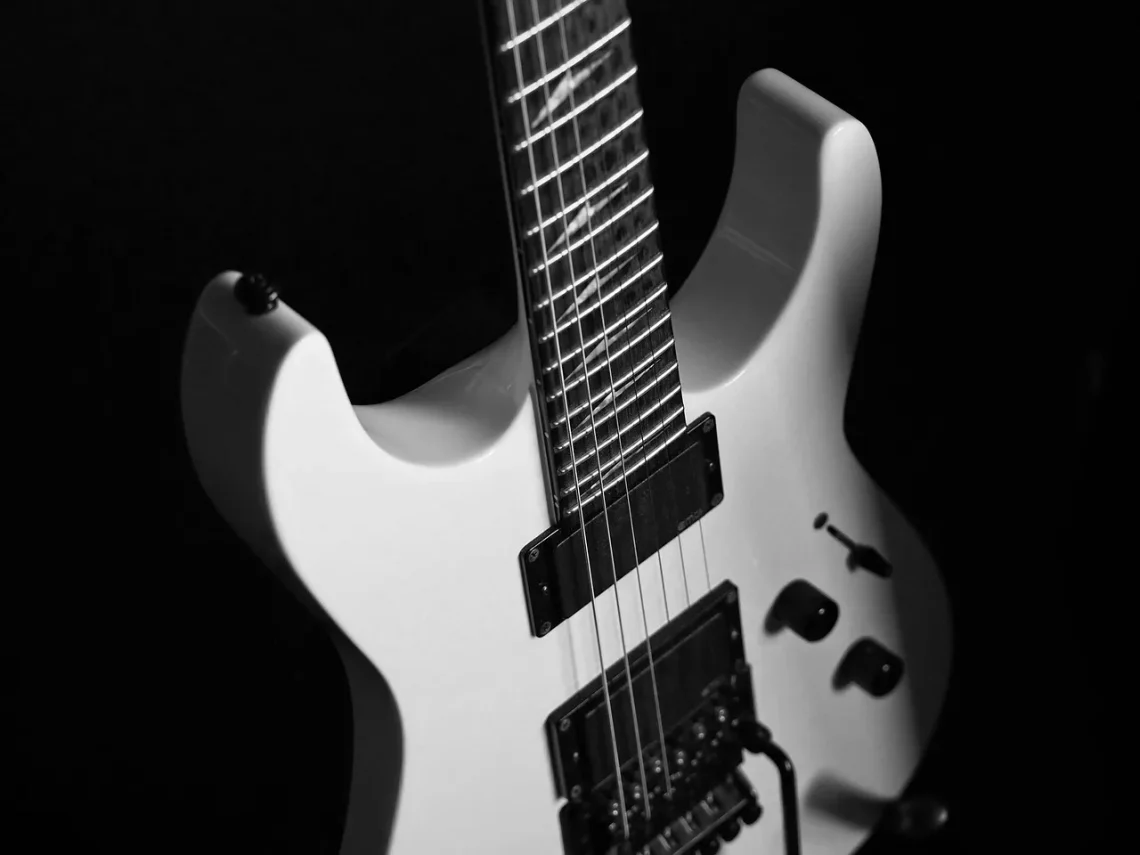
Exploring the Unique Sounds and Techniques of Harmonyca Music
Music has always been a universal language, transcending boundaries and connecting individuals across cultures and generations. Among the myriad styles and genres that exist, Harmonyca music stands out for its unique characteristics and captivating sounds. Emerging from a rich tapestry of influences, this genre weaves together traditional melodies, modern rhythms, and innovative techniques, resulting in a musical experience that is both nostalgic and contemporary.
The instruments used in Harmonyca music often carry a historical significance, reflecting the cultural heritage of the regions from which they originate. Additionally, the interplay between different musical elements creates a harmonious blend that can evoke a range of emotions, from joy to melancholy. As listeners, we are drawn to the intricate layers of sound that tell stories and express feelings, all while inviting us to explore new auditory landscapes.
In this exploration of Harmonyca music, we will delve into the distinct sounds, techniques, and cultural significance that define this genre. Each aspect contributes to the overall experience, making Harmonyca a compelling subject for music enthusiasts and newcomers alike. From its instrumental foundation to the innovative approaches that musicians employ, there is much to discover in the world of Harmonyca music.
The Instrumentation of Harmonyca Music
The instrumentation of Harmonyca music is one of its most defining features. Various instruments contribute to the unique soundscape, each bringing its own character and tonal qualities. The core instruments typically include the harmonica, guitar, and various percussion instruments, creating a rich, layered texture that is immediately recognizable.
The harmonica, often considered the heart of Harmonyca music, is a versatile instrument that can produce a wide range of sounds, from soulful melodies to spirited riffs. Its portability allows musicians to incorporate it into diverse settings, whether performing on stage or jamming with friends around a campfire. The expressive capabilities of the harmonica enable musicians to convey deep emotions, making it a beloved choice for solo performances as well as ensemble work.
Guitarists in Harmonyca music often explore a variety of playing styles, from fingerpicking to strumming, each contributing to the overall sound. The guitar serves not only as a harmonic foundation but also as a source of rhythmic drive. Musicians may experiment with different tunings and techniques, such as slide guitar or percussive strumming, to create a distinctive sound that captures the essence of the genre.
Percussion instruments also play a crucial role in shaping the rhythmic landscape of Harmonyca music. Drums, tambourines, and shakers add layers of texture and energy, driving the music forward and inviting listeners to engage physically with the beat. The blend of these instruments creates a dynamic interplay, allowing for improvisation and spontaneous expression.
Together, the instrumentation of Harmonyca music creates a vibrant tapestry of sound that is both engaging and immersive. Each performance offers a unique interpretation, showcasing the individual styles of the musicians involved while remaining rooted in the traditions that define the genre.
The Role of Improvisation in Harmonyca Music
Improvisation is a vital component of Harmonyca music, providing a space for musicians to express their creativity and spontaneity. This practice allows artists to explore their musical ideas in real time, often resulting in unexpected and exciting moments during performances. The freedom to improvise fosters a sense of collaboration among musicians, encouraging them to listen closely to one another and respond intuitively.
In Harmonyca music, improvisation often occurs within the framework of established melodies and chord progressions. Musicians may take turns embellishing the main theme, adding their own flair through variations in rhythm, dynamics, and phrasing. This collaborative spirit not only enhances the performance but also deepens the connection between the musicians and the audience, creating an engaging and memorable experience.
The improvisational aspect of Harmonyca music can also serve as a means of storytelling. Musicians often draw from their personal experiences and emotions, allowing these feelings to guide their musical choices. As a result, each performance becomes a unique narrative, with the improvisation acting as a conduit for self-expression and connection.
Moreover, improvisation in Harmonyca music can be seen as a reflection of cultural influences. Musicians may incorporate elements from various traditions, blending styles and techniques to create something entirely new. This willingness to experiment and innovate is what keeps the genre fresh and relevant, attracting both seasoned listeners and newcomers.
Ultimately, the role of improvisation in Harmonyca music is essential in maintaining the genre’s dynamic nature. It encourages creativity, collaboration, and personal expression, making each performance a one-of-a-kind experience that resonates deeply with audiences.
Cultural Influences Shaping Harmonyca Music
The cultural influences that shape Harmonyca music are as diverse as its sound. Drawing from various traditions and genres, Harmonyca reflects a rich heritage that transcends geographical boundaries. These influences can be traced back to folk music, blues, jazz, and even classical traditions, creating a unique fusion that captivates listeners.
Folk music serves as a foundational element in Harmonyca, providing a wealth of melodies and storytelling techniques. Many songs within this genre draw inspiration from traditional folk tales and cultural narratives, preserving the essence of the communities from which they originate. This connection to cultural roots adds depth to the music, allowing listeners to engage not only with the sound but also with the stories behind it.
Blues and jazz have also left a significant mark on Harmonyca music. The expressive qualities of these genres, characterized by emotional depth and improvisation, resonate strongly within Harmonyca performances. Musicians often adopt blues scales and jazz harmonies, enhancing the overall richness of their compositions. The rhythmic complexity found in jazz can also influence the way musicians approach their performances, encouraging a playful and exploratory attitude.
Additionally, classical music elements can be observed in the intricate arrangements and harmonies present in many Harmonyca pieces. The use of counterpoint and varied dynamics showcases a level of sophistication that appeals to a wide range of listeners. This blend of genres not only highlights the versatility of Harmonyca music but also demonstrates its ability to evolve and adapt over time.
As a result, Harmonyca music becomes a melting pot of cultural influences, celebrating the diversity of human expression. This rich tapestry of sounds and styles invites listeners to embark on a journey through different musical landscapes, fostering a sense of unity and shared experience.
The Emotional Resonance of Harmonyca Music
One of the most compelling aspects of Harmonyca music is its emotional resonance. The genre has a unique ability to evoke feelings and memories, connecting with listeners on a profound level. This emotional depth is achieved through a combination of lyrical content, instrumental choices, and performance styles.
The lyrics in Harmonyca music often delve into themes of love, loss, and the human experience. Poetic storytelling allows listeners to relate to the narratives presented, drawing them into the emotional landscape of the song. Whether expressing joy, sorrow, or nostalgia, the lyrics serve as a vehicle for conveying complex emotions that resonate universally.
Instrumentation plays a crucial role in enhancing the emotional impact of Harmonyca music. The harmonica’s soulful tones can evoke feelings of longing and introspection, while the guitar’s warm melodies can bring about a sense of comfort and familiarity. Percussion elements add energy and excitement, inviting listeners to engage with the music physically and emotionally.
Furthermore, the performance style of musicians can significantly influence the emotional experience. The passion and energy conveyed through live performances can create an electrifying atmosphere, allowing audiences to connect with the music on a deeper level. Musicians often share personal anecdotes or engage with the audience, fostering a sense of community and shared experience.
In essence, the emotional resonance of Harmonyca music is a testament to its power as an art form. It transcends mere entertainment, serving as a means of connection and expression for both artists and listeners. Through its rich soundscapes and heartfelt narratives, Harmonyca music has the ability to touch the soul, making it a truly unique and cherished genre.
In conclusion, Harmonyca music offers a captivating exploration of sound, technique, and cultural significance. Through its diverse instrumentation, improvisational spirit, and emotional depth, this genre continues to resonate with audiences around the world. As musicians and listeners alike engage with the rich tapestry of Harmonyca, they contribute to a vibrant musical legacy that celebrates creativity and connection.
*Please note that this article is not intended as medical advice. For any health-related issues, it is always best to consult a qualified healthcare professional.*




